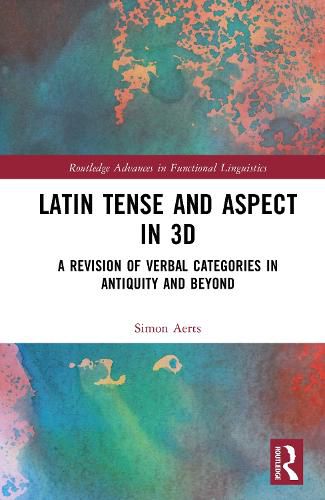Readings Newsletter
Become a Readings Member to make your shopping experience even easier.
Sign in or sign up for free!
You’re not far away from qualifying for FREE standard shipping within Australia
You’ve qualified for FREE standard shipping within Australia
The cart is loading…






This book applies an SFL-inspired, multi-dimensional approach to Latin linguistics, offering fresh insights into Latin narrative tenses while addressing challenges posed by its closed-corpus nature. Bridging Classics and Linguistics, it categorizes the functional potential of the verbal categories "tense" and "aspect" and reshapes existing labels through a quantitative analysis of select historiographical narratives. Aerts elucidates the communicative subtleties of tense and aspect in Latin and highlights their relevance to modern linguistic methodologies and cross-linguistic investigations.
Contributing to functional linguistic theory, the volume explores the semantic boundaries of tense and aspect in human languages, uncovering previously unrecognized uses in Latin and addressing obstacles in historical language analysis. It showcases how modern tools enhance reproducibility and deepen our understanding of grammatical systems, with implications for the study of Latin, Romance languages, and beyond. This book will appeal to scholars in linguistics, classical philology, and historical linguistics.
$9.00 standard shipping within Australia
FREE standard shipping within Australia for orders over $100.00
Express & International shipping calculated at checkout
This book applies an SFL-inspired, multi-dimensional approach to Latin linguistics, offering fresh insights into Latin narrative tenses while addressing challenges posed by its closed-corpus nature. Bridging Classics and Linguistics, it categorizes the functional potential of the verbal categories "tense" and "aspect" and reshapes existing labels through a quantitative analysis of select historiographical narratives. Aerts elucidates the communicative subtleties of tense and aspect in Latin and highlights their relevance to modern linguistic methodologies and cross-linguistic investigations.
Contributing to functional linguistic theory, the volume explores the semantic boundaries of tense and aspect in human languages, uncovering previously unrecognized uses in Latin and addressing obstacles in historical language analysis. It showcases how modern tools enhance reproducibility and deepen our understanding of grammatical systems, with implications for the study of Latin, Romance languages, and beyond. This book will appeal to scholars in linguistics, classical philology, and historical linguistics.